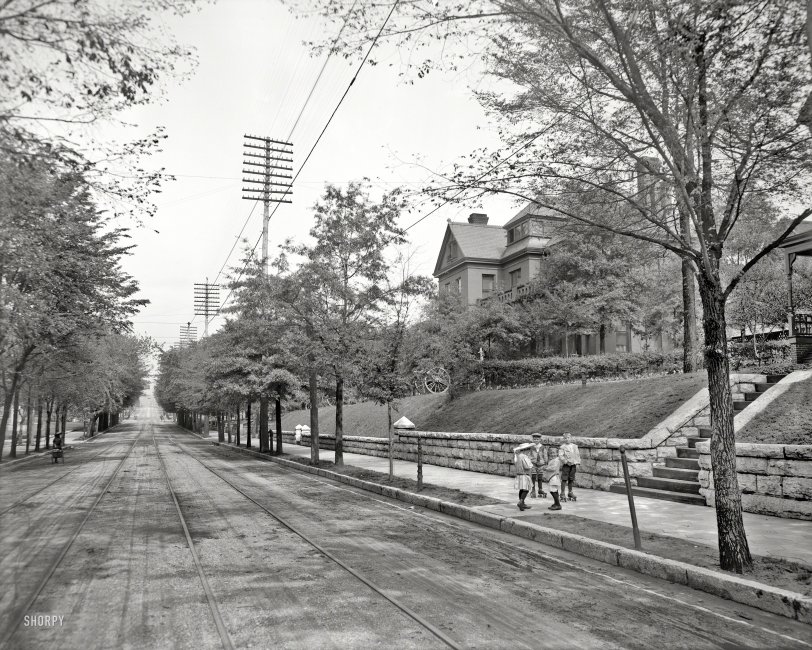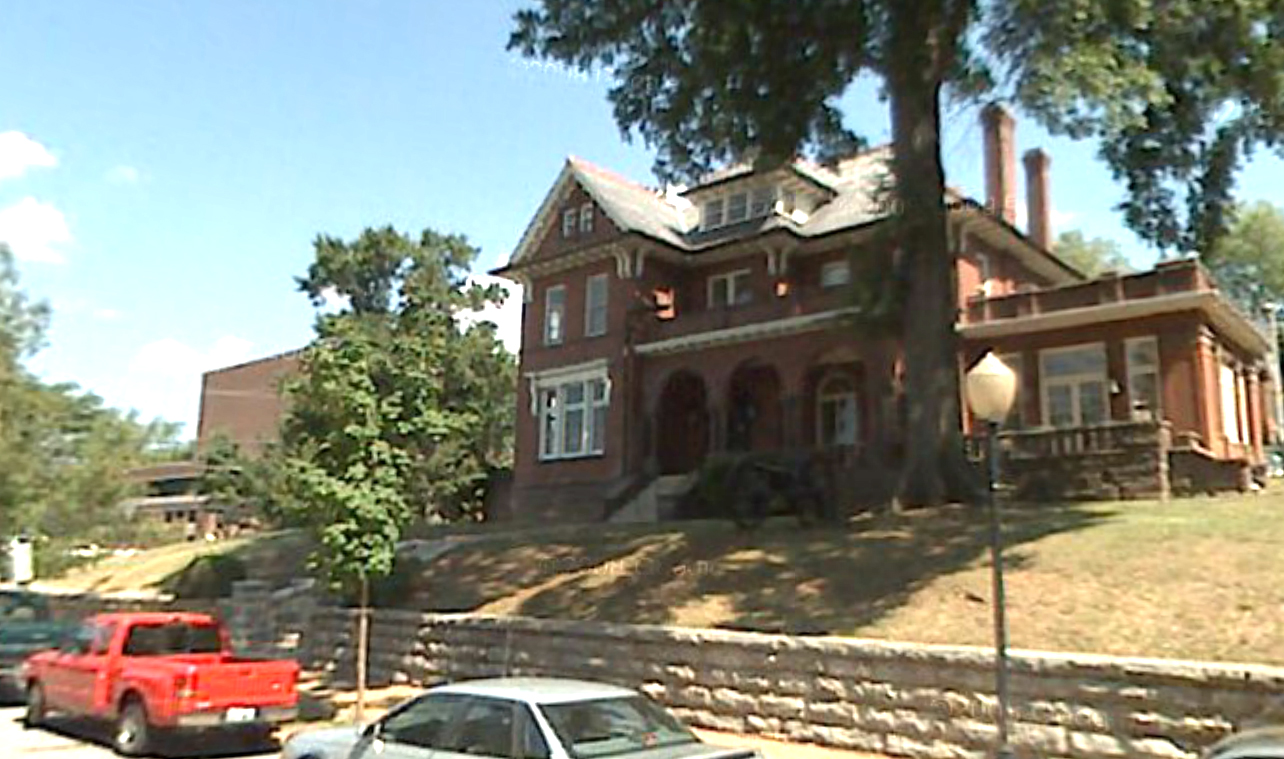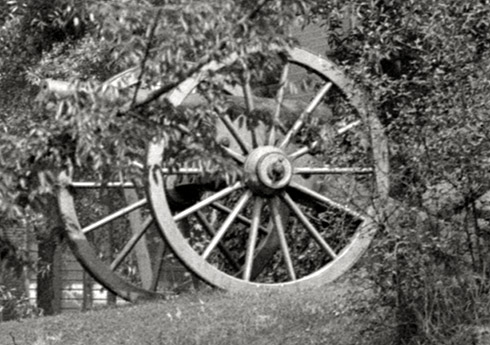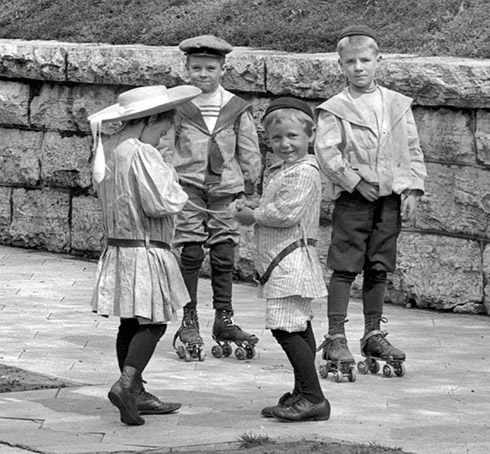


Framed or unframed, desk size to sofa size, printed by us in Arizona and Alabama since 2007. Explore now.
Shorpy is funded by you. Patreon contributors get an ad-free experience.
Learn more.

- Freeze Frame
- Texas Flyer wanted
- Just a Year Too Soon
- WWII -- Replacing men with women at the railroad crossing.
- Yes, Icing
- You kids drive me nuts!
- NOT An Easy Job
- I wonder
- Just add window boxes
- Icing Platform?
- Indiana Harbor Belt abides
- Freezing haze
- Corrections (for those who care)
- C&NW at Nelson
- Fallen Flags
- A dangerous job made worse
- Water Stop
- Passenger trains have right of way over freights?
- Coal
- Never ceases to amaze me.
- Still chuggin' (in model form)
- Great shot
- Westerly Breeze
- For the men, a trapeze
- Tickled
- Sense of loneliness ...
- 2 cents
- Charm City
- What an Outrage
- Brighton Park
Print Emporium
Street Gang: 1907

Circa 1907. "Oak Street, Chattanooga, Tennessee." Close-up of the kids. 8x10 inch dry plate glass negative, Detroit Publishing Company. View full size.
Elevation
RE: Solo's comment:
Chattanooga is very hilly, so most roads cut through the elevations to a degree. The dirt removed was often pushed aside as fill to level lots, which helped make the buildings appear more imposing.
Site prep
I've always wondered about neighborhoods like this where the houses are sited considerably above the level of the street: was a prodigious amount of fill brought in during construction, is the street actually a dugway, or is the difference in vertical datum naturally occurring? This type of urbanscape is quite common in older, more affluent neighborhoods throughout the East. It naturally occurs, though with considerable variation from lot to lot, in places like the Hollywood Hills, but the uniformity shown here suggests a lot of work with pick, shovel, and horse-drawn scrapers and wagons.
Not the Little Rascals
These kids are the offspring of some fairly well to do Parents I think.
Patten House
Although remodeled in 1994, this is the house at 801 Oak St. built by former Confederate Captain Charles A. Lyerly, a prominent banker, in 1893. It was designed in the Italian Villa-style by Samuel M. Patton, a well-known architect who designed a number of noted buildings in Chattanooga. It sits on the corner and has the requisite two cannons, which were set there to mark the placements near the Civil War site of Ft. Wood, which was a Union fort—the cannons are 3-inch Ordnance Rifles. Now known as the Patten House (for Captain Lyerly’s daughter Mrs. Helen Lyerly Patten and her husband Zeboim Charles Patten—of Gold Bond Powder and Bullfrog Sunblock fame—who lived in the house after the Captain died. It was deeded to the University after Mr. Patten died in 1948, and from then was used for music and fine arts classrooms until the remodeling in 1994. It is now the University of Tennessee-Chattanooga Alumni Office and Faculty Club.

UT at Chattanooga
This is the Alumni Affairs house at the University of Tennessee at Chattanooga. At least one cannon is still out front today. This is from the UTC website:
"The Italian styled villa house was designed and built in 1893 by Samuel M. Patton for the family of Charles Lyerly , a captain in the Confederate Army. One of Chattanooga's most distinguished architects of the time, Patton was also the designer of another home in the Fort Wood District, the Watkins House which is located at 801 Vine Street."
Battery placement
The National Park Service placed artillery pieces around Chattanooga to indicate where batteries were placed during the Chattanooga campaign of 1863. They are usually still there. Lots of small NPS sites around, especially up on Missionary Ridge where I used to live.
Not uncommon in the South
Definitely a cannon and there's more than one on that street. Chattanooga saw a lot of action during the Civil War so there was a lot of artillery left behind to perk up local neighborhoods. I wonder how many Yankees that thing took out. Probably not nearly as many as its proud owner said it did!
This is obviously an upscale neighborhood and it looks like it still might be. On Google Maps, the house at 911 Oak is as close as I can find to a match with the sloping yard and the stonework, including that pointy thing now much worn down. You can even see some of the original sidewalk and curb stone. The house looks different, but who knows how much renovation it has undergone in the last 106 years. I can't see those arches on the second floor, for example. Next time I'm up that way, I will try to find this street.
Protection
That cannon likely served as protection against roving gangs of thugs, like the notorious "Buster Browns" and "Roller Skating Cracker Jacks."
Artillery
Looks like a six pound field gun. Once very popular with many armies, it was relatively light and easy to move (took a six horse team) but was considered too underpowered by the middle of the Civil War.
Civil War Cannon
That would be my guess. There were many pitched battles in the Chattanooga area. Perhaps this is the home of a former Confederate Colonel or General.
The big wheels
Is that a cannon sitting atop that terrace, or are they just wagon wheels for decoration?
It sure looks like a cannon to me.
What do you guys think?

So much to see!
There are so many elements in this photo: trolley tracks, and a hanging STOP sign, which I would assume is for the streetcars, as it appears to hang at a crosswalk; a cannon in front of one of the houses; hitching posts for the horses (and what a variety); overhead lines; kids in various outfits with and without skates, in many styles of shoes.
I think if time travel was possible, I would love to walk up and down this street, and talk to its residents.
Dress code
Would you rather be seen by the fellers in your gang in a sailor suit or in a skirt?

























On Shorpy:
Today’s Top 5